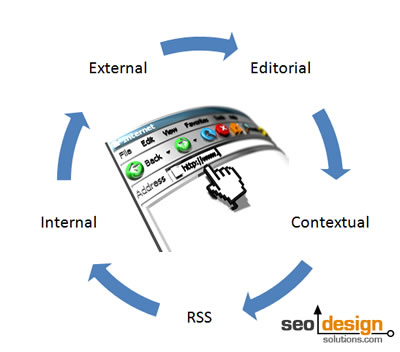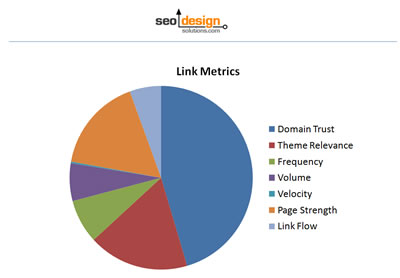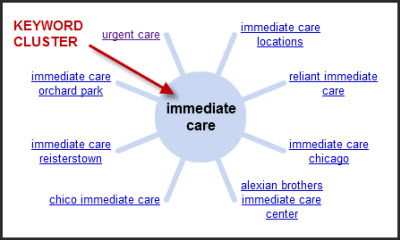When building links you can think or qualitative or quantitative metrics to measure impact. The purpose of this post is to (a) identify the various types of links (b) calculate their impact on search engine rankings and (c) provide an overview of the link metrics to create a protocol for SEO best practices.

Link Building Tips: The Definitive SEO Guide to Link Metrics
Which types of links are effective for SEO and why? Link building and search engine optimization work in tandem to produce viable shifts in search engines for specific keywords and corresponding landing pages.
Link Metrics
Within the framework of link building, there are link metrics which impact the outcome of rankings aside from the number, frequency or volume of links built.
- Domain Trust
- Theme Relevance
- Frequency
- Volume
- Velocity
- Page Strength
- Link Flow /Prominence

Link Metrics: Domain Trust, Theme Relevance, Frequency, Volume, Page Strength, Link Flow, Prominence
Domain Trust – Acquired as a result of sending strong signals of citation a site linked to from authoritative sources or earmarked by search engines as a reference will surely attract domain trust.
Once acquired, consider it the magic ingredient to acquiring immediate results in the search engine result pages. It expedites the review process (through preferential regard from spiders) as well as catapults your content into the real time search spotlight allowing your content to rise to the top with little effort.
Theme Relevance – The more relevant your website is to the contents keyword context feeds directly into how themed your website is semantically. Search engines rely on the various signals of connectivity to ascertain the subject matter of each page within a site.
They also compare the occurrences of specific keywords globally within a site to determine the volume of content available on a subject which in turn acts as a primary signature of relevance. The more frequent certain clusters appear, the more page and domain strength your website can acquire to reinforce SERP positioning.
Frequency – Frequency can imply usage, whereby in this case it represents the frequency of internal or external links for specific keywords. If there is a common recurring usage of a specific keyword in new content or occurrences in legacy content for a specific keyword.
This frequency or occurrence etches a pecking order in the hierarchy of your own websites pages and their corresponding link graph (an aggregate representation of link flow) and how that graph interacts with the web at large.
Volume – The more frequent a link corresponds to a page, the more that page will rise when queried, depending on the page strength, indexation and authority of the domain. Websites with higher link volume (both internally and from external inbound links) exhibit more weight in the SERPs (search engine result pages).
Velocity – Link velocity is the rate in which you acquire or lose links. While this metric typically correlates to off page ranking factors, having a natural link profile (for a variety of keywords) is ideal (rather than a cluster of links around a few specific keywords.
Page Strength – Rankings are created by the page and a page that is strong both within the site (from the level of relevance, URL structure and internal links) lends itself to augmentation from deep links (links form other websites). This is tandem creates a synergistic effect that correlates to buoyancy in the search engine result pages.
Each keyword has a tipping point, once you identify what that tipping point is, you can allocate your resources to aid in weighting the appropriate page to act as a catch all for all semantically relevant keywords that correspond to the root phrase and / or modifiers contained on that page.
You can augment a pages wildcard ranking ability to rank for various keyword combinations (even though those keywords may only be remotely mentioned on a page) by linking to the page with various anchor text. Each of the anchors linking to the page contains a piece of the puzzle for the aggregate ranking factor that page potentially carries in the SERPs.
As an example, if I create a landing page about “shoes” and I link to that page internally with a variety of modifiers such as “red designer shoes, blue running shoes, green high heel shoes, etc.” and if the keywords are also mentioned on the target pages meta data, page title, h1 tag or sparsely on the page, the landing page can serve as a catch all for all of the keywords in the anchor text from the related pages.
This means you can craft pages like a PPC landing page yet acquire organic rankings based on the collective power of internal anchor text or the collective authority of the subordinate pages that all link to the landing page.
Page strength is a metric of semantic connectivity, trust and and link flow. This means that each page is both a destination and a hub for other pages and their respective keywords if harnessed properly.
Link Flow / Link Prominence – Link flow correlates to the total amount of link equity a page has acquired as a result of internal and external inbound links. It is a calculation of relevance based on (a) the strength and focus of the page offering the link and (b) how many inbound links that page has and how many outbound links the page has leaving that page. Between the two, a correlation of link-flow transfers a portion of that link equity from the page offering the link to the target page.
Think of the analogy of a bucket and regardless of how much water you put in it, each link is like a hole in the bucket, so the less links you have leaving a page, the stronger the link flow is leaving that page.
The irony here is, every page is a bucket and has (1) inbound links from other sites or (2) internal links from your own site. The idea is to mirror them so they both reinforce the same topicality and thus elevate the reputation of that page.
The moral of this metric is to (a) only link from themed / relevant pages to other themed relevant pages within your own site architecture. This reinforces the target page (as a destination for the most link equity a.k.a the champion page) and helps search engines determine the focus and assign relevance score to the target page.
Link Types
Of the various link types, they are categorized by the following:
- Editorial
- Contextual
- Internal
- External
Editorial links – are when another website links to your website from the body area of a page, post or image which infers they are providing that link to you based on their own volition. If you mention a website or topic and you know of a great resource, you link to it.
Not only do search engines look at who you link to and the degree of trust those neighborhoods have, but your own page can be penalized or elevated in stature as a result of the nature of the link.
Block segmentation or block segment analysis uses a variation of the VIPS algorithm Vision Based Page Segmentation Algorithm which can identify areas of prominence within a webpage by the corresponding segment of the page content.
Under this parameter, links occurring in blocks surrounded by non-contextual references (like a link to an automotive site on a blog about fish will certainly get flagged as an anomaly.
Considering that to a search engine a page is a bag of words until sorted by algorithms that identify semantic patterns, determine prominence and context between the word and various phrases used, editorial links are surrounded by contextual reference to the anchor text.
For example, a page that receives a contextual link from a page about finance from a website with authority in the finance sector will have a higher degree of relevance than a link from a page from a website whose theme does not correlate to the topic or industry of the page being linked to.
This is called theme relevance and within this realm, contextual links (see below) pass the most weight and by definition are the most difficult to acquire as they are given based on the merit of the target page and whether or not it impressed the editor, blogger or webmaster enough to link to it.
There are other examples of links that are non-contextual such as when provided in a blogroll, image on the sidebar or footer of the page or in a block of links that clearly do not correlate to the site and pr page offering them.
These types of links not as desirable and can in fact penalize a site due to their location. Specifically footer links at the bottom of the page from a non-related site.
There are instances where this is not the case, such as if the site is an authority site and has acquired trust from search engines. In which case, the outbound link could in fact carry a heavy weight of link flow and pass value, but ideally contextual (do follow) links from authoritative sources are the strongest and most beneficial for SEO.
Contextual Links
Contextual links implies that the link is not (a) a stand-alone link (b) at the beginning of a sentence or at the end of a sentence and (c) surrounded by other relevant semantically occurring keywords that reinforce the topic / anchor text of the link.
Contextual links can also double as internal links (links within your own website) and are the preferred method for internally connecting your own content. Contextual links can also serve as external links (based on the url) if they are topically aligned with a page from another website.
If used contextually to link out, the correlation between the page providing the link (title, url, h1) should be semantically relevant to the target page for maximum effectiveness.
Also consider from the point above about the leaky bucket that the volume of inbound links to the page providing the link and the number of external links leaving that page in tandem with the page / domain authority also have an impact.
To Summarize
Yes, we know that link building is tedious, but realize that the most important links you build for your website are the ones you provide to your own content. If your website is replete with authority (as a result of post frequency, age, deep links from other websites) then those aggregate factors get passed along as a result of you theming your own content.
Theme relevance, domain authority, page strength, contextual linking and link flow are all part of a balanced link profile. Strive to accomplish this on each landing page (by making it a likely candidate / destination) and only linking from relevant pages to relevant pages within your own website.
The benefit is page strength and domain authority which infuses your website with certain indemnifying effects within the algorithm to protect against inadvertent penalization which could occur to a newer website lacking trust or citation.
We hope you have found the definitive guide to link building useful and encourage you to pass it along to others on Facebook, Tweet it on Twitter or share it on the social network of your choice. For additional SEO tips and tactics to improve your position in search engines, subscribe to the SEO Design Solutions RSS feed.










Well really a nice post regarding link building. By following these simple steps one can easily take their site to good rankings as link building plays an important role in improving overall sites ranking.
Hi,
Thanks for posting the information.I had a problem in link building but you made it easier.
Thank you for this excellent information, I’m building a website right now and doing alot of SEO, this make it a little more clearly.
This was a great article. Your rigor is great — almost like a text book.
I’m trying to figure out where reciprocal links fit into all this, and whether they can cancel each other out?
Also, does their placing on the site make a difference?
I guess I had better keep reading!
Thanks.
Jerry
They are less effective than years ago, since they are part of a link cluster (which often implies a barter vs. a preferred one way link). That tactic was played out and filtered out for the most part years ago.
A wonderful and professional article. Please do continue with this great stuff…
question:
I usually link to other .gov site from every post on my site. Is it necessary to add a ‘nofollow’ to these links?
Hi Steve:
No need for nofollow on a site that has more authority like a .gov. You actually get more trust for linking to site higher on the link graph.
All the best,
Jeffrey